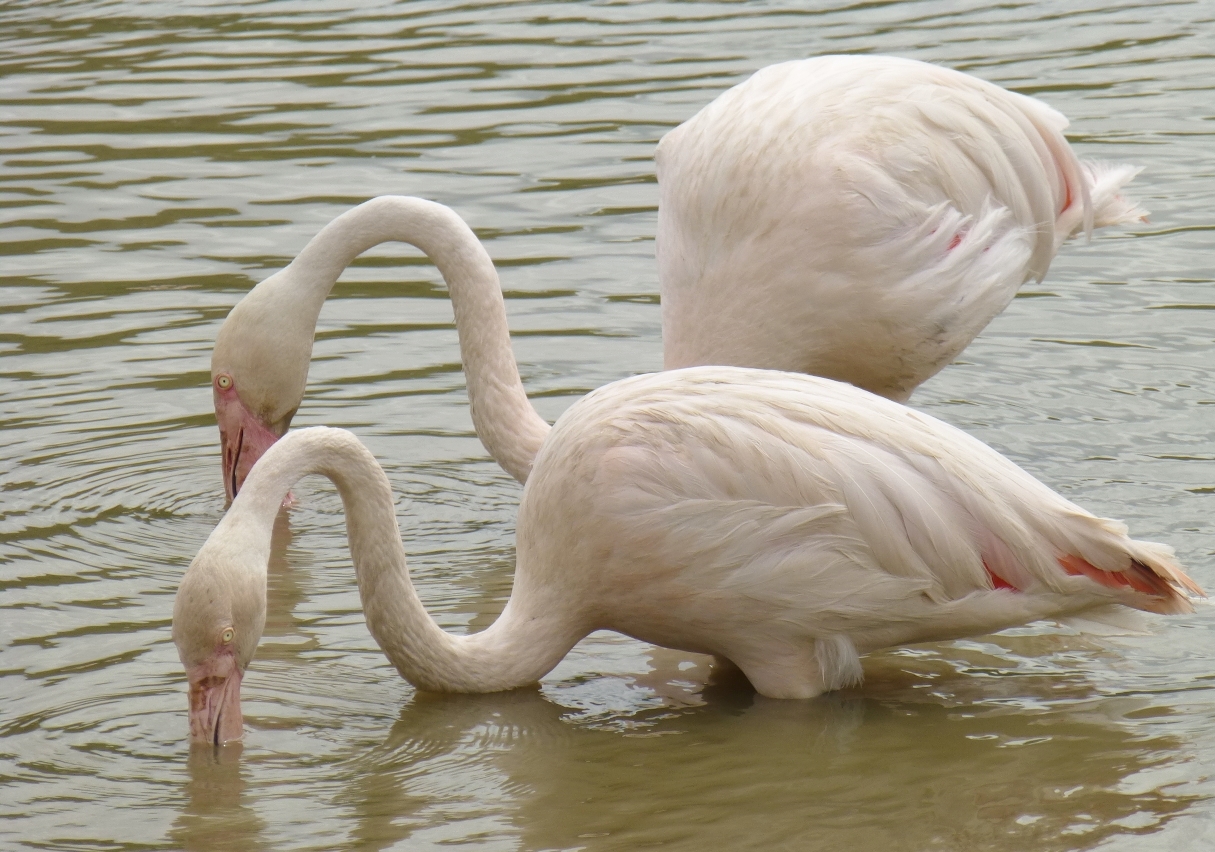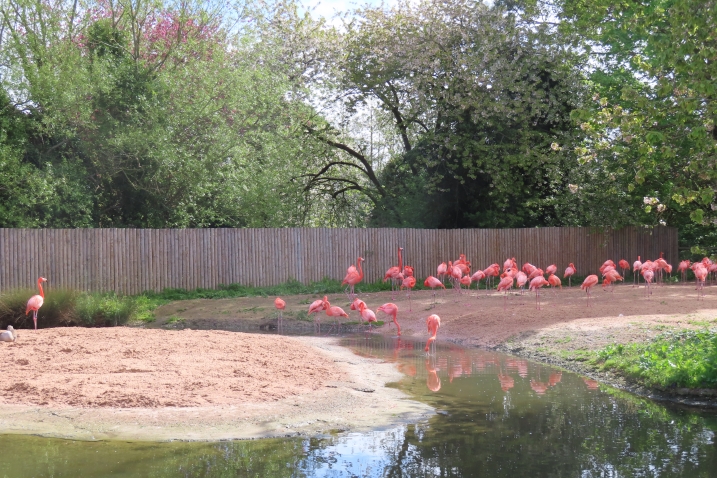Studying wild flamingos
Hello flamingo followers, March means that it's British Science Week 2017 (https://www.britishscienceweek.org/) and so I have taken the opportunity to interview a high-ranking and very experienced flamingo scientist to give you an experience of what it's like running a research project on wild flamingos in their enormous flocks. In this update to the flamingo diary I have shared some of his insights from the field and how these relate to the birds you can see at WWT.
As the home of several IUCN (international conservation union, https://www.iucn.org/) specialist groups (i.e. bodies that "look after" certain types of animal), WWT is well-versed in running, managing and implementing conservation programmes for threatened species or for habitats of importance. As the home of the Flamingo Specialist Group, WWT communicates with flamingo scientists and researchers all over the world to help with conservation and management of important flamingo populations and habitats. We can then use our collection birds to explain these stories, from the wild, of how important wetland ecosystems are, as well as the amazing biology and behaviours of the birds themselves.
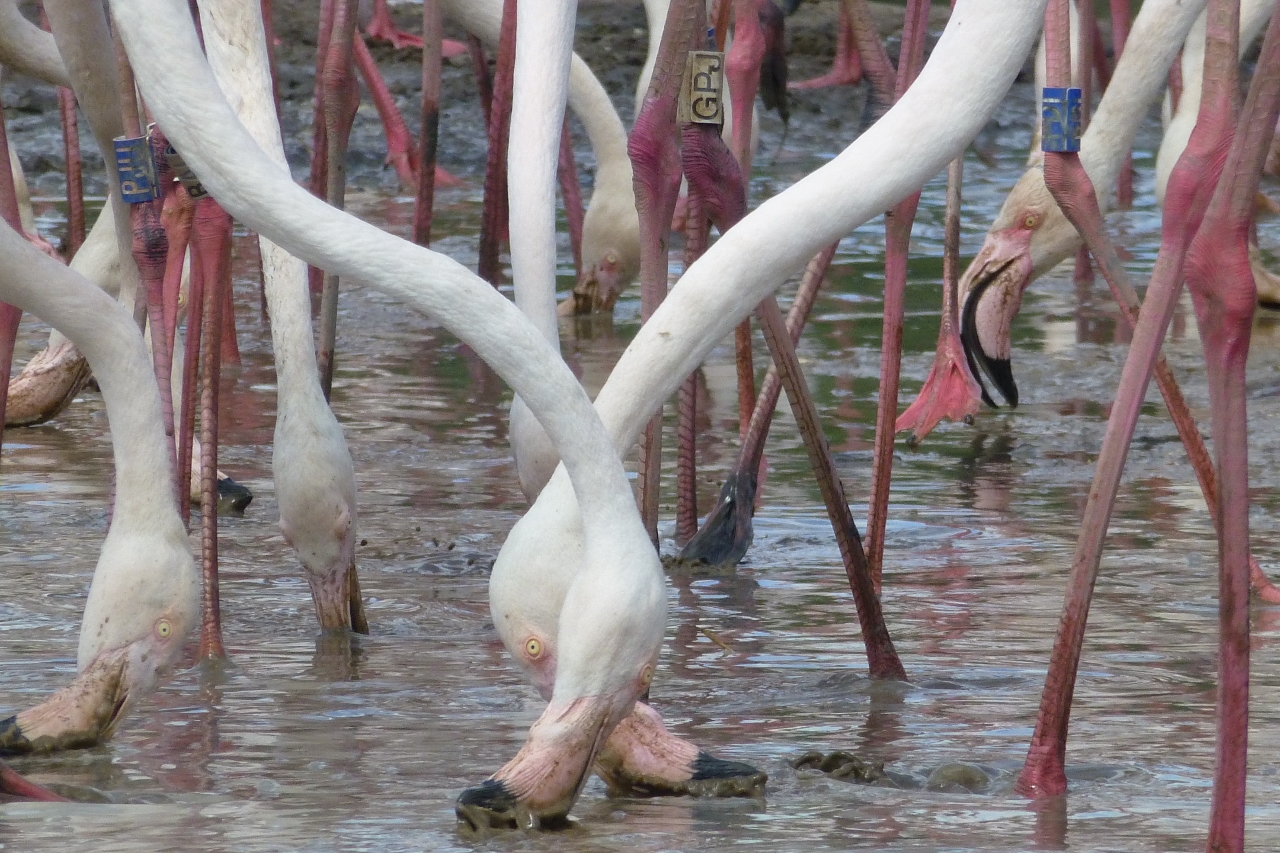 Filtering greater flamingos. At WWT, big flocks means that flamingos act the same as their wild cousins.
Filtering greater flamingos. At WWT, big flocks means that flamingos act the same as their wild cousins.
Perhaps one of the most famous wetlands for flamingos is that of the Camargue in the south of France. Here lives a Mediterranean population of greater flamingos- the closest naturally-occurring flamingos to the UK. These birds have been monitored intensively by scientists since 1947, and chicks are rounded-up for ringing each year to be fitted with individual plastic rings (a practise that commenced in 1977), the same as can be seen on the legs of the birds that live at WWT centres. One of the scientists who studies these French flamingos works closely with the Flamingo Specialist Group (FSG); Dr Arnaud Béchet is the Coordinator of the FSG for the Eastern Hemisphere and is an expert on this largest flamingo species, its ecology and biology (http://www.tourduvalat.org/en/cv/arnaud_bechet). Arnaud is the coordinator of the Conservation of Species department at Tour du Valat, a research centre dedicated to the study of the Camargue's habitats and wildlife (http://www.tourduvalat.org/en).
I asked Arnaud some questions about his work with these wild flamingos to give you lovely readers a taste of working with wild birds.
How long have you been researching greater flamingos in the Camargue?
- I started to study greater flamingos in the Camargue in 2002, when I was hired at Tour du Valat to take over the flamingo research from another scientist who had retired.
Roughly, what is the overall flock size of flamingos that nests in the Camargue each year?
- There are approximately 10,000 breeding pairs of flamingos annually.
Is this population of flamingos that you work with stable, increasing or decreasing?
- Thankfully, this is a growing population, thanks to the protection of the wetlands, and the flamingo's nesting areas.
Do you regularly ring birds each summer?
- We catch and ring around 800 greater flamingo chicks every year before fledging. We can then follow where these birds go and which other wetlands or countries they might end up in.
What current research projects are you running on flamingos at Tour du Valat?
- My present research focuses on understanding the population dynamics (for example birth rates, movements of animals) of greater flamingos within the Mediterranean, giving particular attention to the causes of why birds move away from their breeding flocks and what this might mean for the population overall. I.e. birds disperse away from the colonies that they breed in. Does this mean they start new colonies? Do they return back to breed in the future? Where do they go and what attracts them there?
How do you use the findings of your flamingo research to assist their conservation, or wetland management?
- Efforts have been made to read and record the rings on greater flamingos by our Algerian colleagues in the hope of discovering a new breeding site for this species at Garaet Ezzemoul in Algeria. Following this discovery, an action plan has been written for this species in Algeria and Garaet Ezzemoul has been designated as a Ramsar (a wetland of international importance, http://www.ramsar.org/) site.
Can you think of one new piece of information on flamingo behaviour or biology that we have learned about from your research at Tour du Valat?
- One of our most recent discoveries in flamingo behaviour stems from the long-term study of these birds in the Camargue. One of my PhD students at Tour du Valat has shown that how complex a flamingo's courtship display is increases with age up to around 20 year-old, and then decreases. We have also found that it is the best dancers that pair up together (like is choosing like). This means that courtship is an "honest signal"- it is a true reflection of how fit and strong a flamingo is, so they can use this as a sign to attract the best mate and produce a healthy chick.
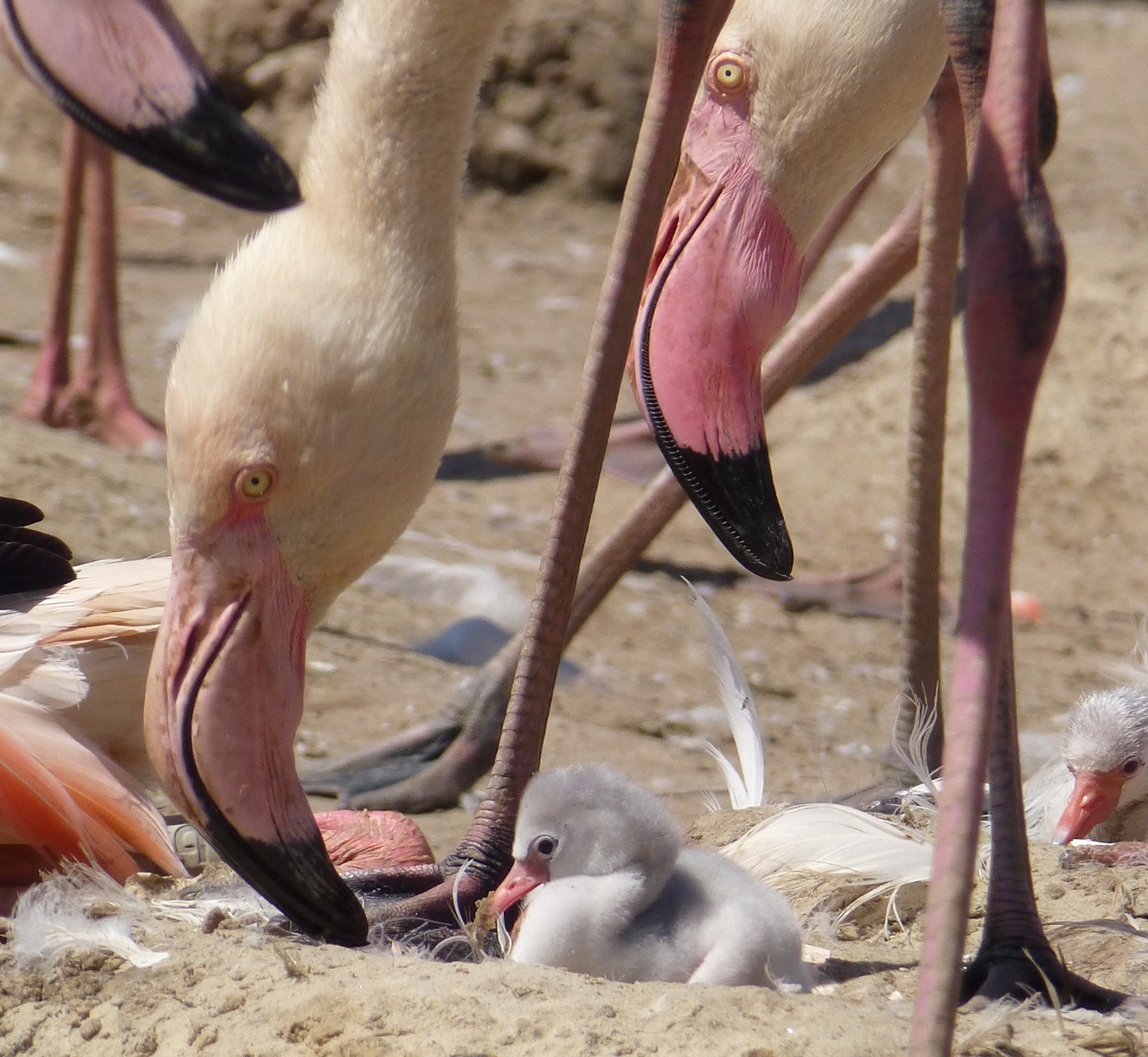 Bringing up baby. The best quality parents produce the strongest chicks. When you have over 250 flamingos in your flock, each bird has the ability to select the best mate for themselves.
Bringing up baby. The best quality parents produce the strongest chicks. When you have over 250 flamingos in your flock, each bird has the ability to select the best mate for themselves.
The work that Arnaud and the other researchers in the Camargue do helps to add to our knowledge of how wild flamingos organise their lives, and what they need from their wetland habitats. What we know about flamingo movements can help us to plan where to protect them (and their nesting sites) and at what times of the year. The ways that flamingos go about choosing their partners tells us how to mix flocks together in captivity to encourage breeding. We also get an idea of how many birds make a flock appear natural. And finally, these long-term studies on ringed birds, at the same location, can tell us how long flamingos live for and how productive they can be across their lifetimes. All information that we can use when observing the flamingos at WWT to make sure we provide them with the same conditions as they would experience in the wild.
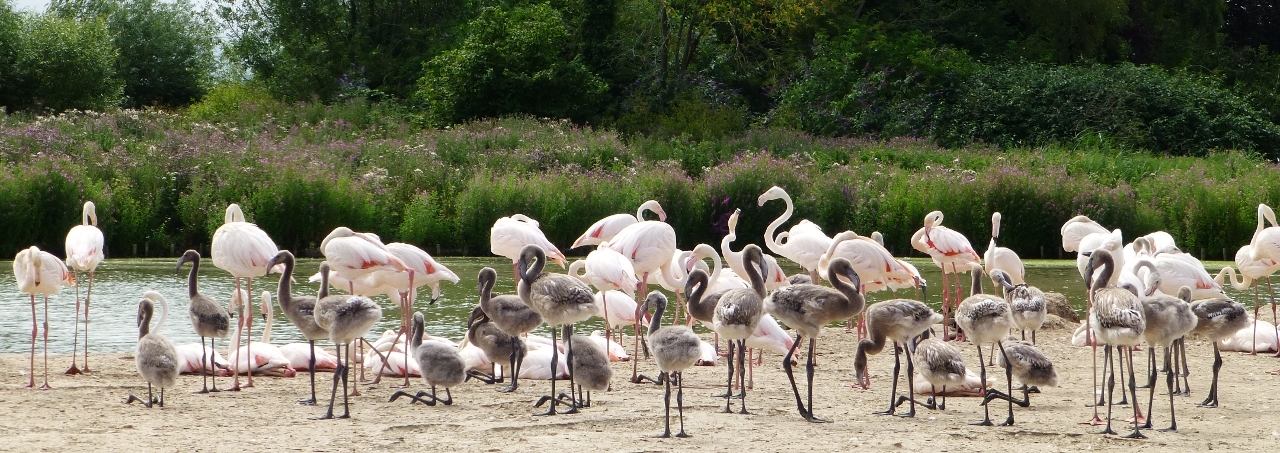 A natural setting in Flamingo Lagoon. A crèche of chicks with a sprinkling of baby-sitters. The same as seen in a wild colony.
A natural setting in Flamingo Lagoon. A crèche of chicks with a sprinkling of baby-sitters. The same as seen in a wild colony.
So whilst the Camargue and Mediterranean France might seem many miles away from WWT Slimbridge, and the other centres with flamingos, the work that is done there is directly relevant to our birds and how we keep them. The flamingos at WWT helps educate people on the lives of their wild cousins in the Camargue. And the flamingos down in the south of France keep providing us with new snippets of information on their own lives that help us refine how we keep our captive birds.
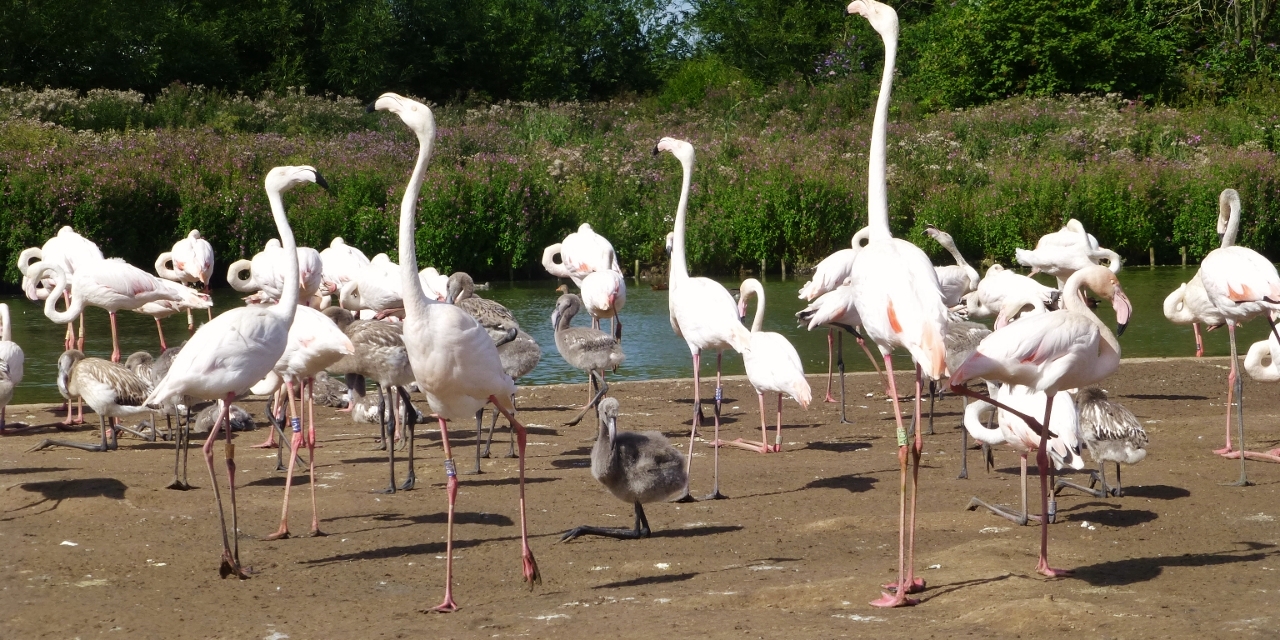 Natural behaviour in WWT flamingos. Head-flagging greater flamingos showing off some of the complex routines of their courtship display. Research from the wild tells us that birds need lots of choice of partner to make this display effective.
Natural behaviour in WWT flamingos. Head-flagging greater flamingos showing off some of the complex routines of their courtship display. Research from the wild tells us that birds need lots of choice of partner to make this display effective.
